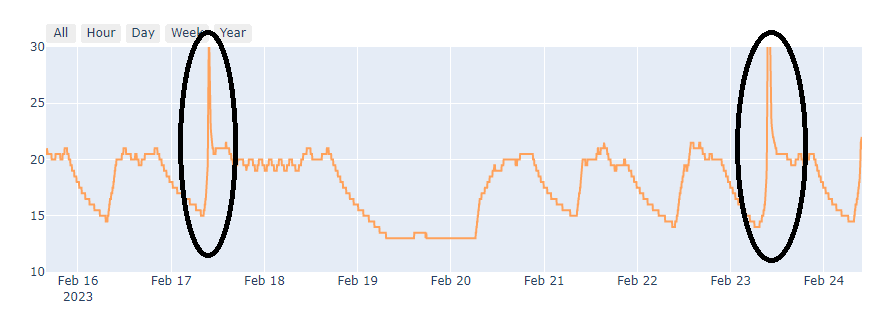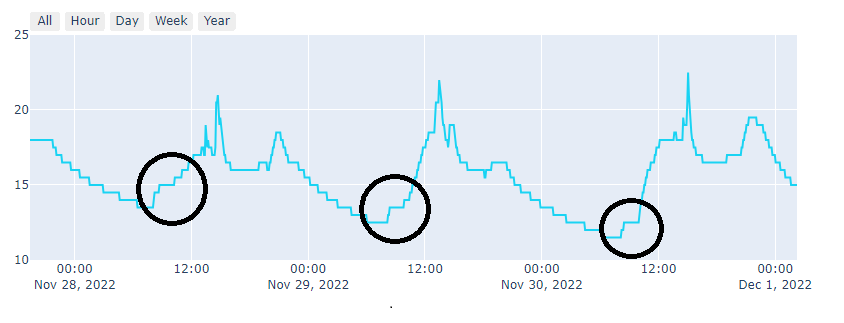Sun, wind, and open doors and windows#
Sometimes there is a heating curve, but it is interrupted for a while.
If you see a sharp spike, especially if it rises well above what would be comfortable, that’s likely to be sun on the sensor.

Wind can also have an effect on some spaces. It has a cooling effect on the windward wall, making the spaces on that side struggle to warm up at the usual rate for the same outdoor temperature.
In many buildings, exterior doors open right into the main public space and it can be easy to observe the air temperature staying put while they are open, or even falling, especially if it has external doors on opposite walls. Opening them both at the same time on a windy day can strip the heat out of a building very quickly. This can happen even with draught lobbies if in practice, the inner and outer doors are open at the same time. Sometimes this is inevitable - people do need to enter the space! - but groups that hire spaces very often block one or both of the doors open to welcome those attending. It often works to point out to them that they’ll be more comfortable if they keep at least one (and preferably both!) closed.
This effect can also be observed by opening interior doors in especially older buildings because these are often designed with less heating or more ventilation in hallways and corridors.

If someone opens the window while the heating is running, the heating curve might look like part of it has been “blown away” by a gust of wind - how badly depends on how windy it is and how quickly heat is lost compared to how fast the system can heat the room.
